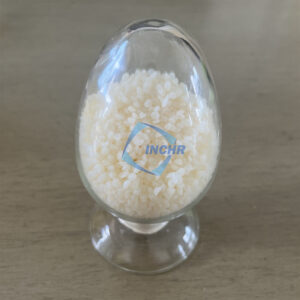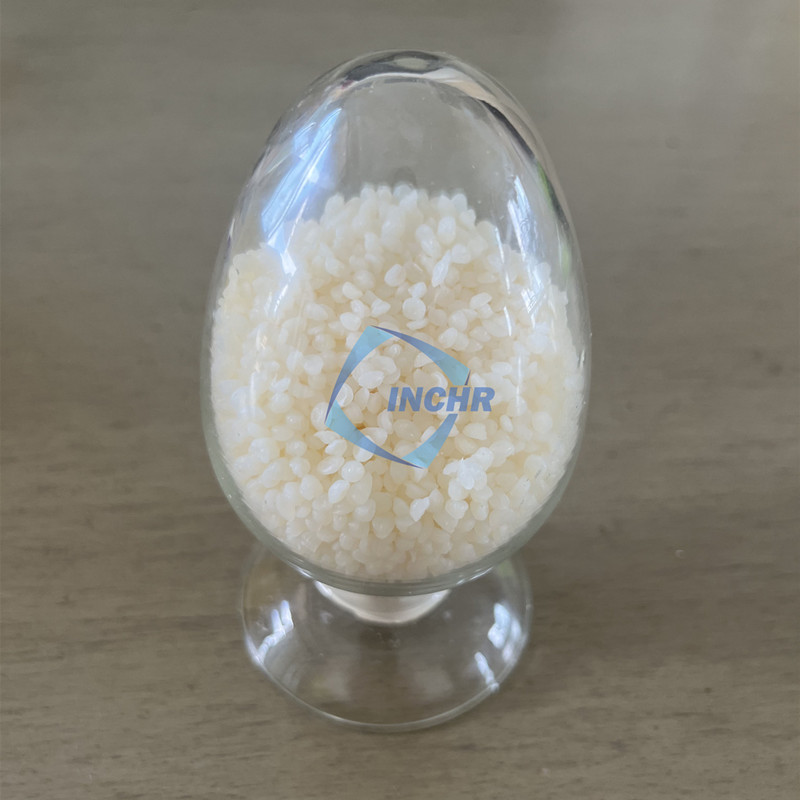The use of an antistatic additive is crucial in static-sensitive industries such as electronics manufacturing, packaging, and transportation. However, traditional antistatic additives often suffer from “exudation” issues, leading to performance degradation and environmental pollution. The “no-exudation” property of INCHR@Permanent Antistatic Additives is becoming a key advantage in addressing this pain point, providing a new solution for long-term antistatic protection of materials.

What is the “Exudation” of antistatic additives?
“Exudation” of antistatic additives refers to the phenomenon in which the antistatic ingredients added to a material migrate from the interior to the surface over time, forming a sticky layer. This process can lead to multiple problems:
- Performance degradation: The exuded ingredients gradually dissipate, significantly reducing the material’s antistatic effectiveness or even completely rendering it ineffective.
- Contamination risk: The exuded materials may contaminate contacting products (such as electronic components and precision instruments), affecting product quality.
- Appearance damage: The material surface may appear greasy or white, damaging the product’s aesthetics and user experience.
Traditional antistatic agents are mostly small molecules that rely on migrating to the surface to form a conductive layer, making precipitation unavoidable. The emergence of permanent antistatic agents has fundamentally changed this mechanism.
The core principle of INCHR@ Permanent Antistatic Agents”No Exudation “: From “Surface Dependence” to “Structural Integration”
The key to INCHR@ Permanent Antistatic Additives’ “no exudation” lies in their structural integration with the substrate.
Unlike traditional products, INCHR@ Permanent Antistatic Additives are mostly polymeric materials (such as polyetheresteramide and conductive polymers). During processing, they form stable chemical or physical bonds with substrates such as plastics and rubber, becoming an integral part of the material. This “integration” eliminates the need for surface migration to work, instead allowing charges to dissipate quickly through their inherent conductive network.
To put it in perspective: traditional antistatic agents are like “oil films floating on the surface,” easily dissipating over time. INCHR@ Permanent Antistatic Additives, on the other hand, are like “electrolytes dissolved in water,” becoming one with the substrate and naturally eliminating precipitation.
Three core advantages of “No Exudation”INCHR@Permanent Antistatic Additives
- Long-Term, Stable Antistatic Performance
Because the ingredients are tightly bonded to the substrate, the effectiveness of permanent antistatic agents is unaffected by time and environmental factors. Even after prolonged use, friction, or cleaning, their conductive network remains intact, continuously dissipating static electricity, meeting the high-performance requirements for long-term performance in applications such as electronic component packaging and medical devices.
- Improved Overall Material Performance
The non-leakage property avoids the deterioration of the material’s mechanical properties often associated with traditional antistatic agents. Permanent antistatic agents offer enhanced compatibility with the substrate, preventing cracking and embrittlement caused by ingredient migration. Instead, they enhance the material’s stability.
- Broader Application Compatibility
In specialized applications such as food contact materials and high-temperature environments (such as automotive engine components), “no exudation” offers enhanced safety and weather resistance. Permanent antistatic agents eliminate the risk of ingredient migration and contamination, or accelerated dissipation due to high temperatures, offering a wider range of applications than traditional products.
How to choose a truly “No Exudation” Permanent Antistatic Additive?
Some products on the market claim to have “permanent antistatic” properties, but in reality, they still exhibit slight precipitation. Two key considerations should be considered when choosing:
- Ingredient type: Prefer high molecular weight and substrate compatibility (such as polyether block amides), avoiding small molecule compounding.
- Testing and verification: Require suppliers to provide long-term aging test reports, observing changes in the material’s surface condition and antistatic performance under high temperature and high humidity conditions to ensure no signs of precipitation.
The “non-exudation” property of permanent antistatic agents not only addresses the performance shortcomings of traditional products but also promotes the development of antistatic materials towards “long-lasting, safe, and multifunctional” properties. With technological advancements, these products will play a key role in more precision manufacturing fields, providing more reliable solutions for ESD protection.




